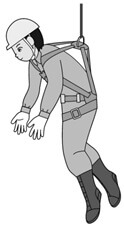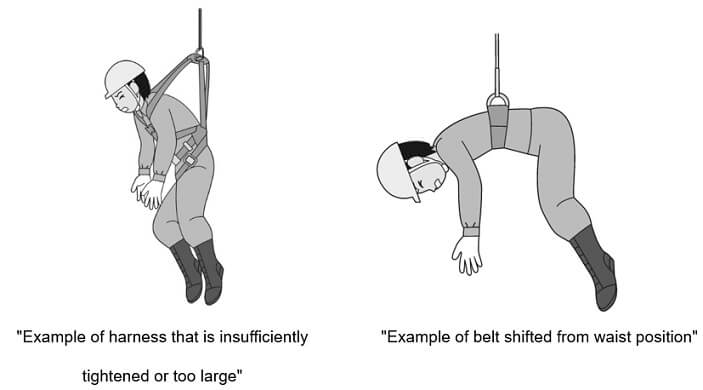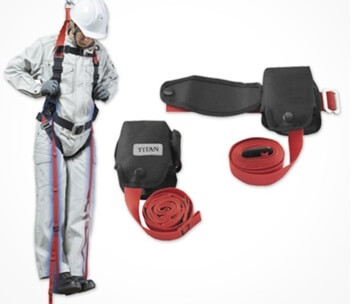[Chapter 5] Section 3
1. Experience dangling in the air
Practical skill:
Experience dangling in the air using a short lanyard with no shock absorber attached. Experience being suspended using an appropriate structural member.
If you have any pain in your chest, abdomen, or groin, it means that you are not wearing the harness properly.

※Do this at a height where you can stand on your own, on the ground or on an equivalently firm place on the scaffolding, and have at least two assistants present.
(A victim dangling in midair cannot climb the rope by himself if there is no other foothold, etc., and it generally takes four or more rescuers to pull the person up.))

2. Measures when a fall occurs
- Even if harness type fall arrest equipment is used properly, if it takes time to rescue a person who has fallen, the victim’s thighs will be compressed by the thigh straps, resulting in poor blood flow. In some cases, blood clots may develop, causing serious damage to the heart, etc.
- If you fall,
(1) Call out for help in a loud voice. Contact your coworkers, etc. on your mobile phone, etc.
(2) Take off heavy articles such as tools on your waist, while calling out to ensure no one is hit by the dropped objects.
(3) Consider whether you can get out of the situation on your own.
(4) If it is impossible to escape on your own, use some method to alleviate constriction of your thighs and wait for rescue.
[Example of alleviating constriction]

*An Exercise:
If you are able to dangle in midair, try out methods of alleviating constriction of your thighs.
受講者様のご希望に合わせ、以下のタイプの講習会もご用意しています


このページをシェアする
講習会をお探しですか?